#asia architects network
Text
Thị trường nhà ở các nước phát triển phục hồi
Đà giảm giá nhà trên toàn cầu, ảnh hưởng đến các nền kinh tế tiên tiến, phần lớn đã dịu lại, theo phân tích của Financial Times (FT) dựa trên dữ liệu của Tổ chức Hợp tác và phát triển kinh tế (OECD). Các nhà kinh tế dự đoán cơn suy thoái bất động sản nhà toàn cầu nghiêm trọng nhất trong một thập niên có thể sắp chạm đáy.
Nhà cửa được xây dựng tại khu dân cư Valley Center, bang California, Mỹ.…

View On WordPress
#architect#architect of the year#architecture#architecture festival#architecture movies#architecture news#ashow#ashui#ashui asia#ashui awards#ashui pavilion#ashui vietnam corporation#ashuicom#asia architects network#bất động sản#bất động sản xanh#biến đổi khí hậu#build#building#building industry#building material#building of the year#cà phê kiến trúc#các#chủ đầu tư của năm#cities for people#city leaders#city vision#climate change#công trình của năm
1 note
·
View note
Text
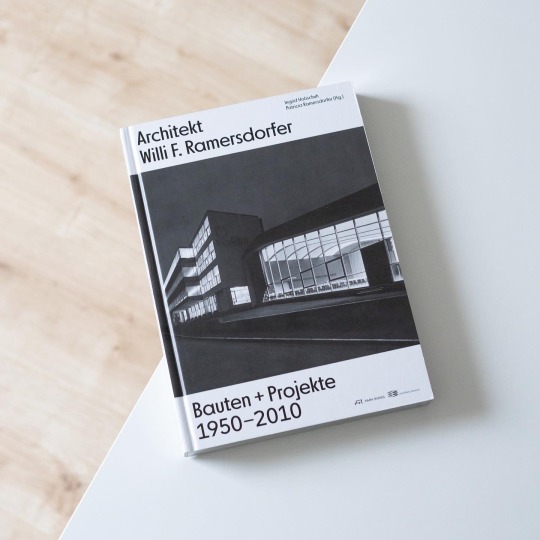

Although it is the second-smallest state of Austria, Vorarlberg has a high density of stellar architecture that, among others, harks back to postwar pioneers like Willi F. Ramersdorfer (1922-2010) and German Meusburger whose collaboration established in 1951 bore a great number of interesting buildings. Ramersdorfer, a young architect who had studied under Sep Ruf at Akademie für Bildende Künste Nürnberg, thanks to Meusburger’s well-established networks from a young age was involved in a large number of commissions ranging from industrial to school and apartment buildings as well as churches. An early focus of the office also lay on the development of SOS children’s villages in Austria but also Africa and Asia. After the death of German Meusburger in 1973 Ramersdorfer continued the office as sole owner focusing on hotels, single-family houses and commercial buildings.
Patricia Ramersdorfer, the architect’s daughter who to this day continues the Ramersdorfer family business, in 2018 co-edited the first comprehensive publication on her father, published by Park Books, a lavishly illustrated and insightful book that effectively showcases the undeniable qualities of Willi Ramersdorfer’s architecture. In the first part of the book several authors elucidate the architect’s career path as well as the different focal points of his work. As regards his hotels carried out from the 1970s onwards Bernhard Tschofen doesn’t withhold a certain criticism in relation to the wooden exuberance of the buildings but also emphasizes the qualities hidden behind the rustic first impression.
The volume’s second part then contains a selection of twelve buildings, profusely illustrated with photos and plans, as well as a complete work catalogue. Together with the preposed personal introduction by Patricia Ramersdorfer the two aforementioned sections provide a highly readable, in-depth overview of the work of key protagonist of modern architecture in Vorarlberg. Warmly recommended!
#willi f. ramersdorfer#monograph#architecture#austria#architecture book#park books#austrian architecture#book
32 notes
·
View notes
Text
Driven by utilitarian concerns with scarcity and fears of cascading environmental degradation, colonial officials implemented tree-planting programs of all sorts -- seed farms, erosion control projects, school forests and so on. [...] Imperial forestry describes a shared set of practices, convictions and institutions that bound Japanese forestry professionals into a network that spanned the Japanese empire itself. [...] Japanese woodsmen (with a venerable forestry tradition all their own) came to terms with Western notions of natural resource management and "scientific forestry." [...] Japanese foresters tailored European ideas about ecology, sustainability, and industrial development to the particular needs of the Japanese empire and the different biomes it encompassed. [...] Japan has played an outsized role in the management and control of Asia's forests. To understand how Japan has maintained such verdant hillsides at home, [...] we need to more fully appreciate its control of sylvan landscapes abroad -- be they in the colonial empire before 1945 or in Southeast Asia thereafter. [...] [W]e ought to place tenant farmers in colonial Korea and shifting cultivators in Kalimantan in the same analytical frame. [...]
---
The most obvious legacies are material: flora introduced during colonial occupation that still grow in Korea today. [...] As part of a campaign to supposedly "beautify" the Korean landscape [...], Japanese settlers planted [...] cherry blossoms along streets, in squares, and within parks across Korea. [...] Another impact can be found in the forestry institutions founded during colonial rule. The flagship Forestry Research Station established by the colonial government, for example, only grew after liberation, becoming a hub of agro-forestry research that underpinned South Korea's economic take-off under Park Chung-hee. Many of the architects of South Korea's so-called "forest miracle" -- the wildly successful project of reforestation in the 1960s and 70s -- were trained in colonial scientific institutions. This is not to suggest that the dense forests that today blanket South Korea are somehow due to colonial rule. Reforestation under Park was born of markedly different circumstances -- its Cold War context, authoritarian rule and energy portfolio. But that doesn't mean that foresters on either side of 1945 weren't united by the same sets of anxieties and aspirations. [...] [A] set of abiding concerns [...] have animated forest conservation measures across the full sweep of the tumultuous twentieth century in Korea. [...]
---
[R]eferences to the ondol (the radiant heated floors conventional to Korean dwellings) are everywhere in the forester's archive. Japanese woodsmen quickly marked the ondol and its associated lifestyle as ground zero of deforestation. By the 1920s, forestry officials had launched an ambitious campaign to gain control over the energy consumption patterns of the home -- a crusade on caloric inefficiency that furthered the reach of the colonial state into the domestic sphere. In this sense, the ondol provides an illuminating lens through which to examine how forestry touched the lived, even bodily, experience of colonial rule in a sometimes bitterly cold environment. This is especially true of the civilian experience of the Asia-Pacific War in Korea, a period of fuel scarcity that resulted in draconian programs of caloric control. [...]
[W]e have much to gain by looking beyond the boundaries of the islands of Japan to write its environmental history. Understanding the tree-smothered hillsides of the so-called "green archipelago" requires that we pay close attention to its material linkages with the rest of Asia. It demands that we track commodity chains, supply lines, and resource politics across the Pacific.
---
Words of David Feldman. As interviewed and transcribed by Office of the Dean, School of Humanities at University of California, Irvine. Transcript titled “Seeing the forest for the trees.” Published online in the News section of UCI School of Humanities. 21 May 2020. [Some paragraph breaks and contractions added by me.]
48 notes
·
View notes
Text
This story first appeared in Signal, Meduza’s Russian-language newsletter on the rhetoric of Putinism. The translation below appeared in The Beet, a weekly email dispatch from Meduza covering Central and Eastern Europe, the Caucasus, and Central Asia. Sign up here to get the next issue of The Beet delivered directly to your inbox.
Hello, and welcome back to The Beet!
Almost exactly one month ago, a group of gunmen attacked the Crocus City Hall concert venue on the outskirts of Moscow, killing and injuring hundreds of people. A
On the evening of March 22, terrorists attacked Crocus City Hall, a concert venue outside of Moscow where a crowd of spectators was waiting to see a performance by the Russian band Piknik. Several men armed with machine guns entered the venue, opened fire on the crowd, set fire to the building, and then fled. The attack killed 144 people and injured more than 500 others. As of this writing, dozens of concertgoers are still considered missing.
Almost immediately, unconfirmed reports emerged, including in the Western press, that an ISIS offshoot had taken responsibility for the events at Crocus City Hall. By midday on March 23, the ISIS-affiliated news outlet Amaq was reporting that Islamic State militants “had carried out a coordinated attack on a large crowd of Christians.” Then, news broke that the FSB had made a number of arrests in connection with the attack, and that at least some of the apprehended suspects were citizens of Tajikistan.
Nearly 24 hours after the tragedy, Vladimir Putin addressed the Russian people. He declared March 24 a day of national mourning and promised that all those responsible for the terrorist attack would be punished.
That phrase, “terrorist attack” — terakt in Russian — was once a central element of Putin’s rhetoric. Now, after more than a decade on the sidelines, it has reemerged in Russian politics, displacing the out-of-favor (and banned in the context of Russia’s ongoing invasion of Ukraine) word “war.”
Who is to blame?
The FSB has arrested — and in some cases, tortured — around a dozen suspects in connection with the March 22 attack, but the identities of its architects are still unknown.
Amid an emerging global consensus that the attack on Crocus City Hall was the work of ISIS-K, or the Islamic State-Khorasan, which operates primarily in Pakistan and Afghanistan, the Russian public seems inclined to believe otherwise. Judging by the tenor of Russian social media discourse, at least, a few other narratives are gaining more traction.
The first alternative theory points the finger at Ukraine. Margarita Simonyan, editor-in-chief of the state-controlled media network RT, called reports linking the attack to ISIS “fake,” strongly suggesting in social media posts that Ukraine organized the attack with help from the “collective West.” The so-called Z-patriot war bloggers are unanimously critical of the Russian security forces’ impotence but haven’t reached a consensus on whether they believe Western intelligence or Kyiv orchestrated the attack. Deputy Security Council Chairman Dmitry Medvedev was especially quick to blame the “Kyiv regime.” Putin also referenced “preliminary information” about Ukraine’s role in the attack.
Then there are the Kremlin opponents who believe that Russian authorities engineered the attack. They support this idea with a conspiracy theory from the late 1990s, which holds that a series of apartment bombings in Moscow during that period was an inside job. This particular theory seems to be gaining popularity — on the day of the Crocus attack, there were over 200 times more hits, compared to the previous baseline, for the Wikipedia page about the Moscow apartment blasts. The anti-Putin opposition also believes the attack will be a pretext for Russian authorities to “tighten the screws” and announce a second wave of mobilization following Putin’s recent “electoral victory.”
For now, there are more questions than answers surrounding the March 22 attack. But it does seem clear that a feeling united Russians that day, and it had little to do with the logistics of the attack. For more than a decade, the phrase “terrorist attack” meant one of two things for most Russians: something that happened far away to other people or a meaningless phrase in Federal Security Service reports about the latest successful operation thwarting an attempt to “destabilize the socio-political situation” in Russia.
There have been times in relatively recent Russian history when both terrorism and the expectation of the next attack were routine. Memories of those times seemed to be well buried. But after March 22, they suddenly burst to the surface, inflecting Russians’ perceptions of what happened that night at Crocus City Hall.
Pandemic, war, drone attacks, shelling in cities on the Russia–Ukraine border — none of these notably catastrophic events called up a remotely similar reaction. Crocus, like the town of Beslan, will forever be connected with terrorism in the minds of Russians. Many will never forget where they were and what they were doing when they first heard that men with machine guns had stormed the entertainment complex.
‘All of us’
The terrorist attack on Crocus City Hall wasn’t simply a mass shooting at a concert venue — it was also a reminder of all the other traumatic events in Russia’s relatively recent past. And collective traumas tend to unite, at least momentarily, even very fragmented and atomized societies, becoming part of civic identity.
In the weeks that followed, Russian society has fiercely debated the specifics of the attack: whether it could have been prevented, the adequacy and proportionality of authorities’ response, and who should be held responsible. At the same time, Russians quickly came to view Crocus City Hall as an attack on “all of us,” merging it with the collective memory of the terrorist attacks that became a crucial part of national identity in the 1990s and 2000s.
That period was a difficult and dangerous one for Russians, marked by the apartment bombings in Moscow and Volgodonsk in 1999; the bombing of Moscow’s Pushkin Square in 2000; the bombing of the Victory Day parade in Kaspiysk, Dagestan, in 2002; the Moscow theater hostage crisis in 2002; suicide bombings at the Krylya rock festival in Tushino, outside of Moscow, in 2003; an explosion on a commuter train in Stavropol Krai in 2003; a bombing on the Moscow metro in 2003; the Beslan school siege in 2004; bombings on the Moscow metro in 2010; a suicide bombing in Moscow’s Domodedovo Airport in 2011; and many other incidents.
People who experienced this difficult era remember the pervasive fear that came with it: the sense that you or your loved ones could be killed at any moment; the habit of avoiding large crowds; and finding comfort in superstitious behaviors, like always sitting on the fourth subway car because the last bombing happened on the second one.
That omnipresent fear was largely forgotten over the course of the last 10 years or so — and this is widely considered a great achievement for Russian society. But the feeling turned out to be lurking under the surface. Now, following the Crocus attack, a new generation of people, who don’t personally remember residential buildings blowing up in Moscow or suicide bombings at music festivals, will inherit the collective memory of living daily life in fear.
Making connections
Like “terakt,” the word “connections” has a specific set of connotations regarding security issues in Putin’s Russia. Following Crocus, pro-Putin media started referring to a possible “Ukraine connection.” To understand that phrase, it’s helpful to recall past “connections” Russia has made.
From 1994 to 1996, Russia was at war with the separatist Chechen Republic of Ichkeria, and by the mid-1990s, the phrase “Chechen connections” was already played out in public discourse. Authorities and media searched for “connections to Chechnya” in almost every high-profile murder or fraud case. During that period, it was not uncommon to hear government officials attribute any and every social problem to the “Chechen connection” or the “Islamic factor.” The tendency was so widespread that novelist Viktor Pelevin satirized it in the 1999 novel Generation P.
In the 2000s, when Russia was waging its second war on Chechen separatism and suffered a series of bloody terrorist attacks, “Chechnya” was usually the first and main explanation for unfortunate or tragic events — it was also often the correct explanation.
“Chechen connections” were subsequently found in high-profile cases like the murder of opposition politician Boris Nemtsov in 2015 and the arson attack on a local office of Russian human rights organization Memorial in Ingushetia in 2018 (the Putin administration forced Memorial to shut down in 2021). In the 2010s, however, the phrase took on a different meaning. In the 1990s and 2000s, vague “connections” to Chechnya were supposed to lead back to Chechen militants hiding out in the Caucasus mountains. More recently, it has come to mean the Chechen authorities — i.e. regional Governor Ramzan Kadyrov and his security forces. And though the phrase persists in the media, Russian officials no longer utter the words “connections to Chechnya.”
Similarly, after Georgia’s 2003 Rose Revolution, and especially following the 2008 Russia–Georgia War, Russian state media and authorities sought out “Georgian connections.” The ones they found were somewhat tenuous. After the Beslan school siege in 2004, then-Deputy Chairman of the State Duma Sergey Baburin and Foreign Minister Sergey Lavrov both hinted at possible links to Georgia. In 2010, Russian Security Council Secretary Nikolay Patrushev said that an investigation had uncovered “Georgian connections” in two bombings on the Moscow metro. (Chechen separatist militant leader Dokka Umarov, who was presumed to be residing in Georgian territory at that point, took responsibility for the attacks, which killed 41 people.) In 2012, Russian security forces and propagandists claimed that Givi Targamadze, a Georgian politician and leading figure in the Rose Revolution, had organized rioting at a Moscow protest.
From terrorist threat to moral panic
Vladimir Putin sees his chief task as Russian president as eliminating all real and imagined threats against his personal power and Russia itself. The Kremlin is always fighting off carefully labeled menaces: “Chechen terrorists,” “color revolutions,” “the Collective West,” “anti-Russia,” “U.S. hegemony,” “LGBT ideology,” and so on.
If the threats on that list seem increasingly abstract, it’s because the real threats to Putin’s presidency have dissipated (or, more accurately, been systematically eliminated), leading the Russian authorities to set their sights on potential future threats. And where they’ve failed to find potential threats, they’ve resorted to fabricating them. This process has had some unintended consequences: the constant search for threats inevitably leads to over-simplifications of politically complex issues, as well as to bizarre phobias — which explains how Russian politicians wound up asserting that Russia’s Armed Forces are waging war against gender-neutral toilets in Ukraine.
At times, the Kremlin’s perception of actual threats differs sharply from ordinary Russians’ perceptions. To try to bridge that gap, Russian authorities learned to incite moral panics during Putin’s third term as president, from 2012 to 2018. The government sought broad social support and, perhaps even more importantly, the appearance of support for its policies, by presenting Russia as the defender of “traditional values,” “the union between man and woman,” and other conservative social positions. In 2024, the supposed potential threat now comes from the “collective West” rather than somewhere deep in the Caucasus.
The political mechanism is simple: convince people that someone or something (the LGBTQ+ community, globalism, migrants — it doesn’t really matter who or what) threatens their safety and their way of life, and that the authorities are protecting them from that threat.
Politicians the world over propose urgent, decisive measures and see their popularity rise, their supporters rally around them, and their power to enact their own agendas grow. Examples abound: Hungarian Prime Minister Viktor Orban, Turkish President Recep Tayyip Erdoğan, Putin, and many others. The specific enemy in every moral panic is new, but the threat — the destruction of a common way of life — is always the same.
The moral panic mechanism is most effective in authoritarian regimes, like Putin’s Russia, where the authorities control the information space. But it’s not limited to autocracies — the right wing in the U.S. incited very successful moral panics about hippies in the 1970s and “gay culture” in the 1980s.
A transparent — but powerful — pretext
The attack on Crocus City Hall was a real — not imaginary or potential — threat to public security, but Ukraine is the subject of Russia’s current moral panic. The Russian authorities are seeking a “Ukrainian connection” in the Crocus events simply out of inertia — their current worldview leaves no room for any other enemy.
But no one — not Dmitry Medvedev, not Margarita Simonyan, and none of the pro-Kremlin war bloggers (with maybe an exception or two) — is really out to convince millions of Russian nationals that Ukraine organized the Crocus attack.
The main audience for “Ukraine connection” propaganda is Vladimir Putin himself. And, of course, he doesn’t need to be convinced of anything. What he requires is a demonstration that everyone — from the security forces and propagandists to the Russian people — is behind him and shares his fixation on Ukraine. As for everyone else, the public demonstration of belief in a “Ukraine connection” is a core part of Russia’s current patriotic credo. If you want to be considered a Russian patriot, you have to express certainty that Russian troops did nothing wrong in Bucha; that Russia didn’t shoot down Malaysia Airlines Flight 17; that Russians and Ukrainians are “one people”; that Moscow should capture Kyiv; and, now, that there’s no doubt about a “Ukraine connection” to the Crocus attack.
Supporting the “Ukraine connection” theory as confidently and loudly as possible amounts to a demonstration of loyalty to “our own” and hatred of the enemy against whom “we” have united. That’s why convincing evidence of Ukraine’s involvement is unnecessary and no counterargument is effective. No one is even asking how organizing the attack would benefit Ukraine — the country has long since been cast in the role of infernal evil.
Even public displays of grief for the victims of the Crocus attack have become demonstrations of loyalty. Public officials were reportedly instructed to lay flowers at memorials in the days after the attack — this kind of enforced public grieving is a first in Putin’s Russia. The private sector has undertaken analogous shows of solidarity, like writing off victims’ debts. The Crocus City Hall attack presents an ideal opportunity for public and private sector workers alike to show that they support “their own” because, in this case, they don’t have to identify with a war of aggression to do so.
What the Putin administration needs most is public buy-in for its war on Ukraine. Much of its current rhetoric — from complaints about the “collective West” to outlawing “LGBT propaganda” — has become part of a campaign to generate consent for a senseless invasion, just as the invasion itself is framed as the “logical” answer to those “threats.”
There is little evidence that the attack on Crocus City Hall was the work either of Kyiv or of Moscow itself. It seems likely, instead, to have its roots in other issues, like Russia’s colonial past, its involvement in wars in Chechnya and Syria, and its treatment of Muslim communities within its borders. But those who believe it was an inside job are right about one thing: the deadly tragedy has become a convenient way for the Kremlin to stir up fear and suspicion about Ukraine, while exploiting a difficult period in Russia’s recent past to rally people around its brutal present-day policies.
3 notes
·
View notes
Photo

Silena: The Alps meet Asia by noa* network of architecture @networkofarchitecture. Read more: Link in bio! Photography: Alex Filz Architecture that spans the history of multiple generations has always had a certain allure to it. Like that of the historic ‘Moarhof’, today known as Hotel Silena. Located at the far end of Valler Tal, the hotel has recently marked a new chapter in its history that bears the signature of noa*. In 2017 the family that owns Hotel Silena decided to make a striking architectural change based on a bold and unusual decision. The 2022 transformation is the second the house has undergone, and completes a concept that began five years ago, also carried out by noa* network of architecture. The structure has been enriched with a new entrance, six new suites, and an adults’ wellness area, thus bringing the original concept to fruition… #hotel #italy #alps #архитектура www.amazingarchitecture.com ✔ A collection of the best contemporary architecture to inspire you. #design #architecture #amazingarchitecture #architect #arquitectura #luxury #realestate #life #cute #architettura #interiordesign #photooftheday #love #travel #construction #furniture #instagood #fashion #beautiful #archilovers #home #house #amazing #picoftheday #architecturephotography #معماری (at Italy) https://www.instagram.com/p/ClpLILor9q6/?igshid=NGJjMDIxMWI=
#hotel#italy#alps#архитектура#design#architecture#amazingarchitecture#architect#arquitectura#luxury#realestate#life#cute#architettura#interiordesign#photooftheday#love#travel#construction#furniture#instagood#fashion#beautiful#archilovers#home#house#amazing#picoftheday#architecturephotography#معماری
20 notes
·
View notes
Text
I.B.1698 MICHAEL [IBM] harrelltut.com of 1968 quadrillionharrell.tech Machine Engineering [ME] AutoCAD [MAC] Robotics in Architectural Memory Equipment w/Symmetric Encryptions of Satellite [RAMESES] Broadband Communication [B.C.] Languages… Scientifically Expanding the Asia [SEA] Pacific Network Info Centre of Internet Number Resources from the Regional Internet Registries [RIRs] @ 1921 QUANTUM 2023 HARRELL 2024 TECH 2025 Apple & IBM [A.i.] LLC of ATLANTIS [L.A.] 5000
WELCOME BACK HOME IMMORTAL [HIM] U.S. MILITARY KING SOLOMON-MICHAEL HARRELL, JR.™

i.b.monk [ibm] mode [i’m] tech [IT] steelecartel.com @ quantum harrell tech llc

eye 1921steelecartel.tech TITAN of SIRIUS [U.S.] gullahgeecheemilitary.tech WEALTH @ quantum harrell tech llc

ibmautocad.tech automation & robotic framework architect @ 1921 QUANTUM 2023 HARRELL 2024 TECH 2025 Apple & IBM [A.i.] LLC of ATLANTIS [L.A.] 5000

ibmautocad.tech engineer @ 1921 QUANTUM 2023 HARRELL 2024 TECH 2025 Apple & IBM [A.i.] LLC of ATLANTIS [L.A.] 5000

iMac 1968 Patents [I/P] @ 1921 QUANTUM 2023 HARRELL 2024 TECH 2025 Apple & IBM [A.i.] LLC of ATLANTIS [L.A.] 5000
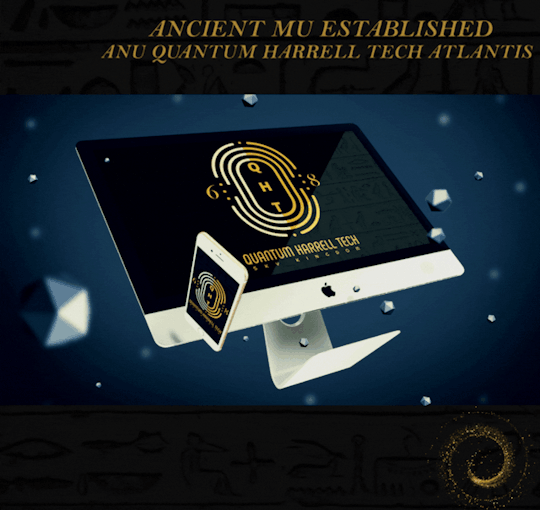
Quantum intelligent [Qi] CAD systems II @ 1921 QUANTUM 2023 HARRELL 2024 TECH 2025 Apple & IBM [A.i.] LLC of ATLANTIS [L.A.] 5000
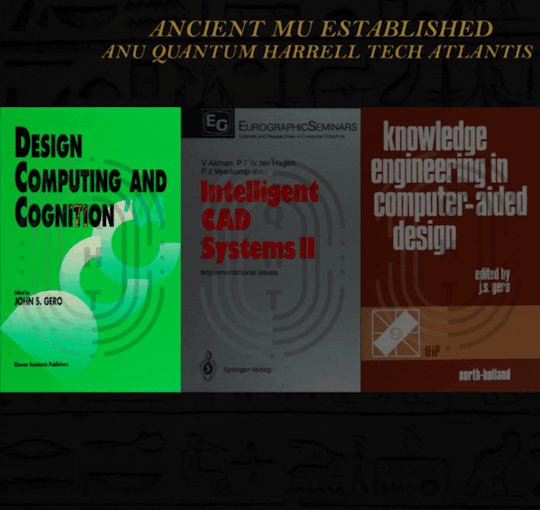
Quantum Autodesk @ 1921 QUANTUM 2023 HARRELL 2024 TECH 2025 Apple & IBM [A.i.] LLC of ATLANTIS [L.A.] 5000

Quantum intelligent [Qi] Automation & Computer Engineering [ACE] @ 1921 QUANTUM 2023 HARRELL 2024 TECH 2025 Apple & IBM [A.i.] LLC of ATLANTIS [L.A.] 5000
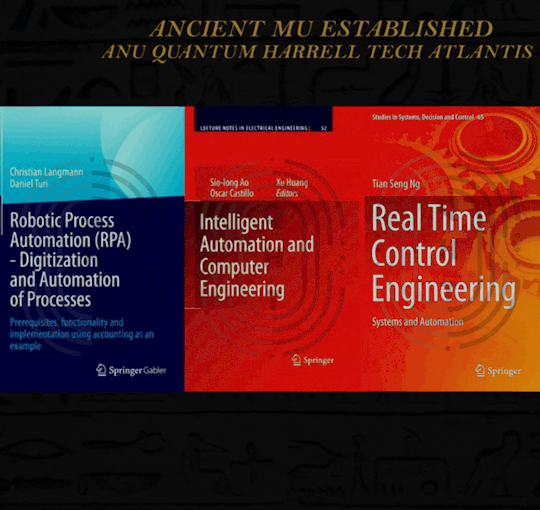
Quantum internet [Qi] Security WEALTH @ 1921 QUANTUM 2023 HARRELL 2024 TECH 2025 Apple & IBM [A.i.] LLC of ATLANTIS [L.A.] 5000
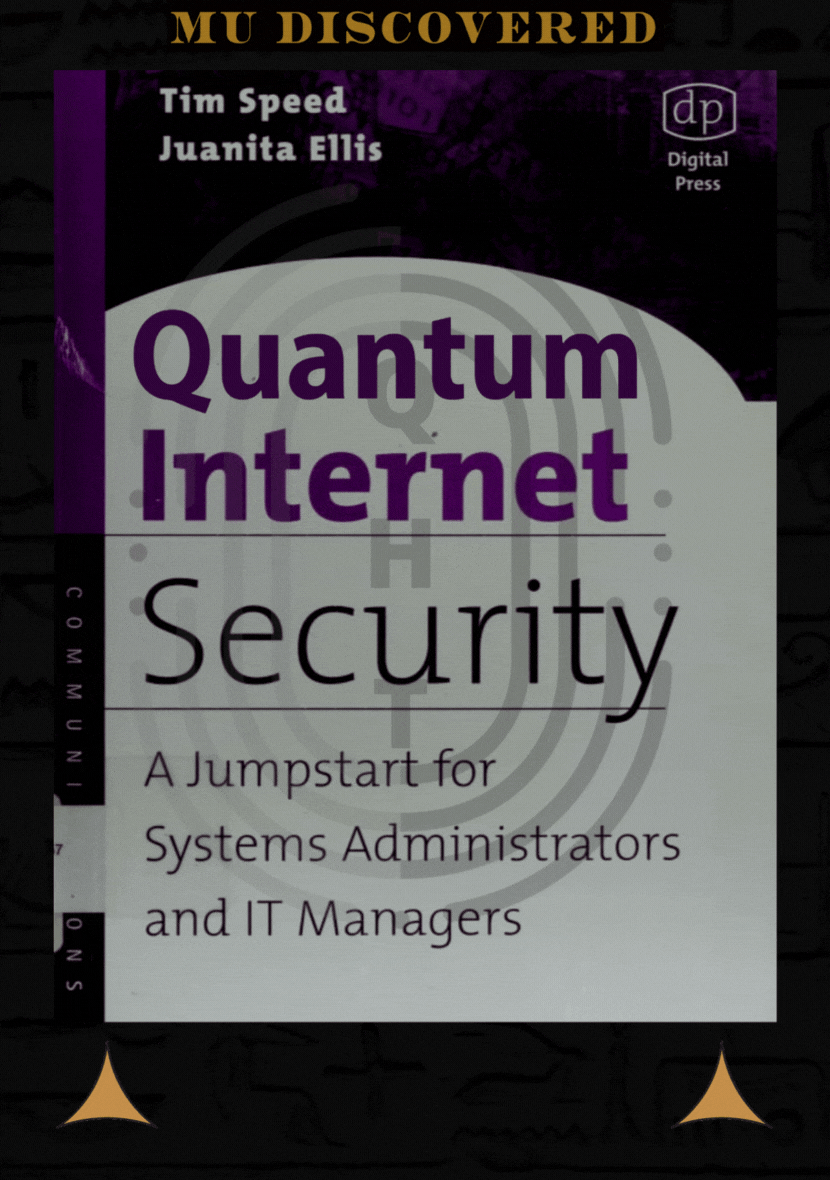
Private quintillionharrell.tech BANKING of anugoldenblackwallstreet.com WEALTH MANAGEMENT REALITY @ 1921 QUANTUM 2023 HARRELL 2024 TECH 2025 Apple & IBM [A.i.] LLC of ATLANTIS [L.A.] 5000
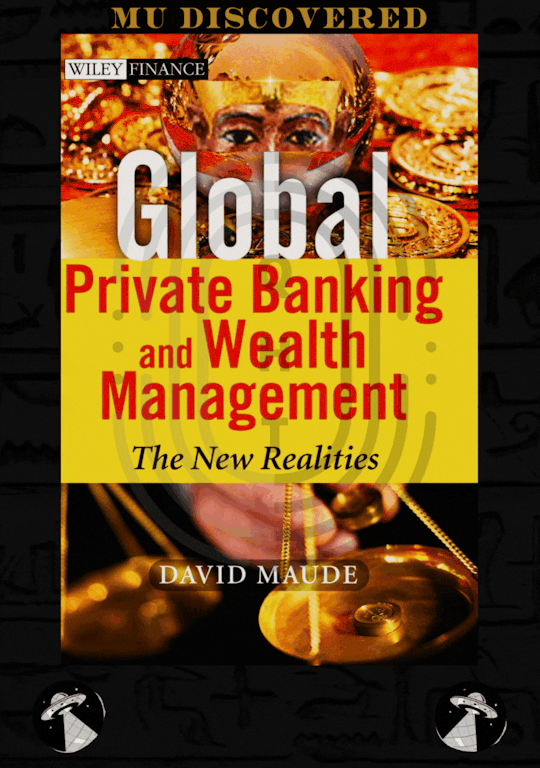
private quadrillionharrell.tech banking & extreme quintillion.tech wealth management @ 1921 QUANTUM 2023 HARRELL 2024 TECH 2025 Apple & IBM [A.i.] LLC of ATLANTIS [L.A.] 5000
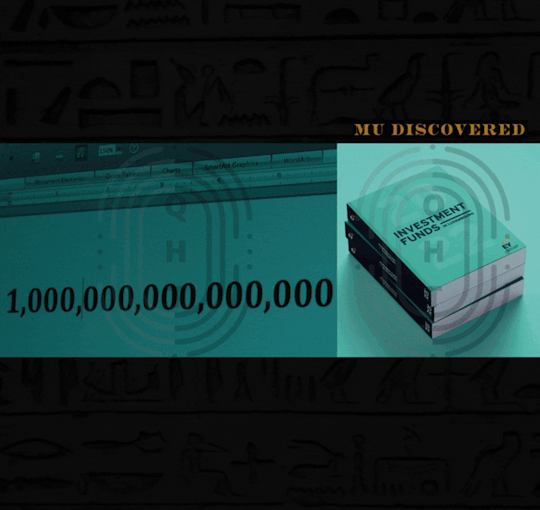
how many quantumharrell.tech yachts can you afford???
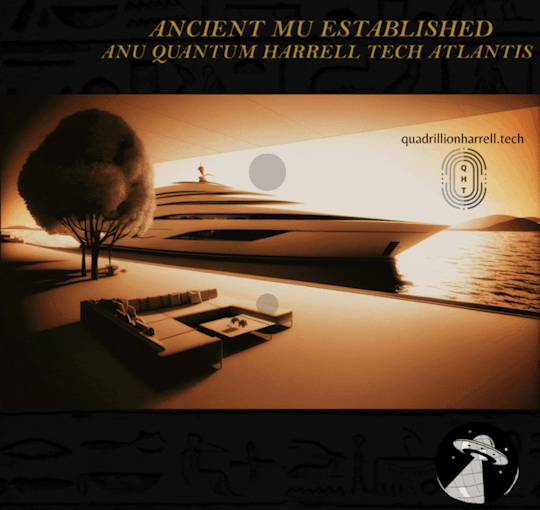
quintillionharrell.tech eye always @ the top

© 1698-2223 QUANTUM HARRELL TECH LLC All [L.A.] SKY ILLUMINATI Business [I.B.] DotCom [iDC] Domain [I.D.] Rights Reserved.
#quadrillionharrell.tech#harrelltut.com#quintillionharrell.tech#u.s. michael harrell#quantumharrelltech#king tut#o michael#mu:13#quantumharrelltut#kemet#om#1698qhtesla.com#1698#1968#gen x better than you
3 notes
·
View notes
Text
Adache Group Architects
FIRM
ESTABLISHED IN 1969
ADACHE
Headquartered in Ft Lauderdale, Florida with satellite offices in Pensacola, Florida and Beijing, China (Adache-Icon) along with strategic alliances in several states and countries, the Adache team, and their international network, is proud of its past accomplishments resulting in hundreds of projects consisting of tens of thousands of hotel, resort, and multi-family residential units, and is recognized world-wide for their creativity, functionalism, energy efficiency, and quality service.
The company has continuously been able to perform at a high and consistent level for nearly fifty years because of its structure, high demands, exceptional staff and top-notch management.
Successful architecture requires the highest level of expertise and professionalism. While every project and program is unique, the strategies and principles of the design process remains constant at Adache Group Architects. The Adache firm is structured with an average length of experience of over 20 years per professional; and is integrated into creative and technical teams for providing comprehensive professional services.
Adache Group Architects has had an international reputation, for over 50 years, as a leading International architectural firm, having clients, projects, and strategic alliances in over 45 countries and on 5 continents. Now through the implementation of the Adache-Icon LLC partnership, the group has expanded and further positioned itself with permanent facilities on America’s west coast, the Middle East, Asia, and the Pacific Rim; and is capable of working in almost any language and in any environment producing various building types of award winning ethnic architecture. Adache-Icon brings, in addition to Adache Group Architects, Leisure Quest International of Los Angeles whose principals have produced world renown structures and theme parks worldwide.
Visit KuCoin: https://www.kucoin.com/ucenter/signup?rcode=rP2LEVT
5 notes
·
View notes
Text
Primary School - AKDN
PRIMARY SCHOOL
Award Cycle: 2002-2004 Cycle
Status: Award Recipient
Country of origin: Burkina Faso
Location: Gando, Burkina Faso
Client: Community of Gando Village
Architect: Francis Diebedo Kéré
Size: 30'000 m²
Completed: 2001
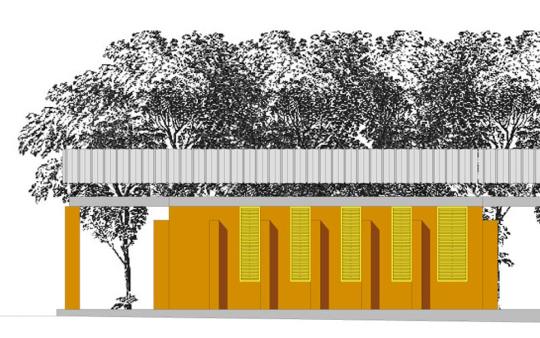

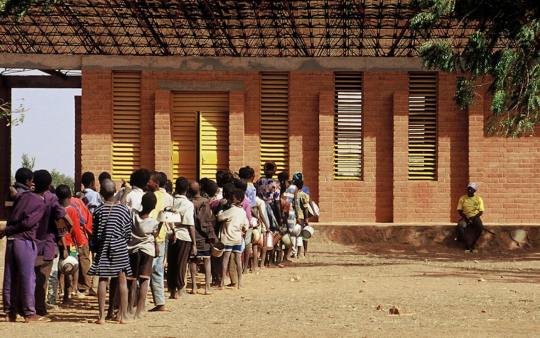
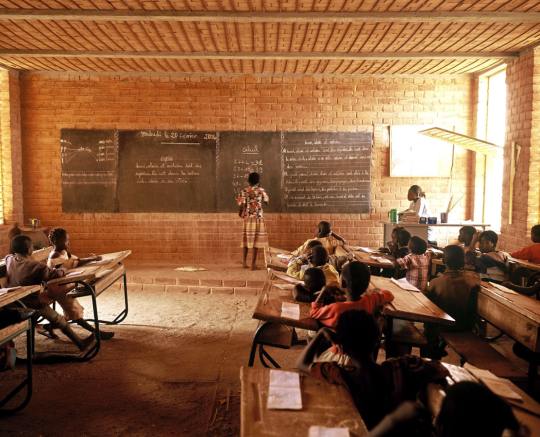

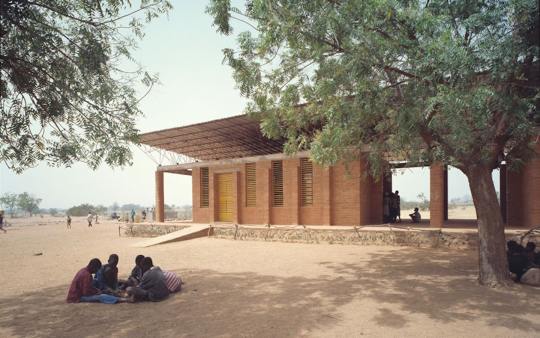


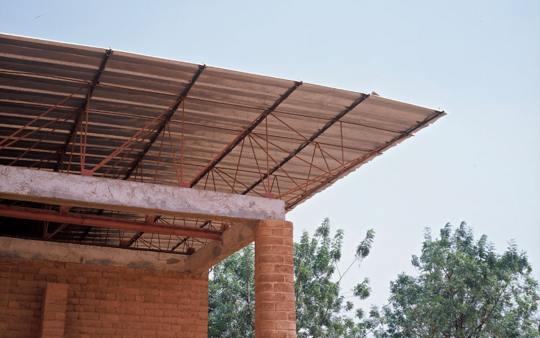

2 notes
·
View notes
Text
Activated Carbon in Green Building: Sustainable Solutions for Indoor Air Quality

Introduction:
In the pursuit of sustainable construction practices, green building initiatives are gaining momentum worldwide. Among the various components contributing to green buildings, indoor air quality (IAQ) plays a crucial role in ensuring occupant health and comfort. Activated carbon, with its exceptional adsorption properties, has emerged as a sustainable solution for improving IAQ in green buildings. This article explores the role of activated carbon in green building design, its benefits for indoor air purification, and its impact on creating healthier living environments.
According to Next Move Strategy Consulting, the global Activated Carbon Market is predicted to reach USD 10.85 billion by 2030 with a CAGR of 7.8% from 2024-2030.
Download FREE Sample: https://www.nextmsc.com/activated-carbon-market/request-sample
Understanding Activated Carbon: Activated carbon, also known as activated charcoal, is a highly porous material derived from carbonaceous substances such as coconut shells, wood, or coal. Through a process of activation, typically involving high temperatures and steam, the carbon material undergoes structural changes, resulting in a vast network of pores and a large surface area. This unique structure enables activated carbon to adsorb a wide range of contaminants, including volatile organic compounds (VOCs), odors, and airborne pollutants, making it an ideal choice for indoor air purification in green buildings.
Benefits of Activated Carbon in Green Building: Activated carbon offers several advantages for improving IAQ in green buildings. Firstly, it effectively removes harmful pollutants and allergens from the indoor environment, including VOCs emitted by building materials, furniture, and cleaning products. By adsorbing these contaminants, activated carbon helps reduce the risk of respiratory problems, allergies, and other health issues associated with poor indoor air quality. Additionally, activated carbon filters can trap fine particulate matter (PM2.5) and airborne pathogens, further enhancing indoor air cleanliness and occupant well-being.
Inquire before buying: https://www.nextmsc.com/activated-carbon-market/inquire-before-buying
Moreover, activated carbon is a sustainable and eco-friendly material, aligning with the principles of green building design. It can be derived from renewable sources such as coconut shells or wood waste, minimizing environmental impact and promoting resource conservation. Activated carbon filters can also be recycled or regenerated, extending their lifespan and reducing waste generation. By incorporating activated carbon filtration systems into green building projects, architects and developers can enhance sustainability credentials while ensuring superior indoor air quality for occupants.
Geographical analysis
Asia-Pacific dominates the activated carbon and it is convincingly expected to remain dominant in the Activated Carbon Market throughout the forecast period. China, Japan, and India are major consuming countries that are expected to lead the market in this region for the next several years.Also, the upsurge in the population of the Asia-Pacific region has led to a rise in demand for pure and safe potable water. This, coupled with the availability of raw materials and other resources will drive the growth of the market in this region.
Applications of Activated Carbon in Green Buildings: Activated carbon finds diverse applications in green building design, ranging from ventilation systems to air purifiers and HVAC filters. In ventilation systems, activated carbon filters can be integrated to capture and neutralize indoor air pollutants before recirculating clean air into living spaces. Air purifiers equipped with activated carbon filters are commonly used in residential and commercial settings to remove odors, smoke, and other contaminants from indoor air. Additionally, activated carbon-impregnated HVAC filters are increasingly being adopted in green buildings to improve IAQ and energy efficiency simultaneously.
Furthermore, activated carbon can be incorporated into building materials and finishes to mitigate indoor air pollution. For example, paints and coatings formulated with activated carbon can help absorb VOCs emitted by interior surfaces, contributing to healthier indoor environments. Similarly, furniture and upholstery treated with activated carbon can reduce off-gassing of harmful chemicals, promoting occupant well-being and comfort in green buildings.
Case Studies and Success Stories: Numerous green building projects worldwide have successfully implemented activated carbon solutions to enhance indoor air quality and occupant comfort. For instance, the Bullitt Center in Seattle, Washington, a flagship green building certified as a Living Building, utilizes activated carbon filtration systems in its natural ventilation strategy to maintain superior indoor air quality without compromising energy efficiency. Similarly, the Pixel Building in Melbourne, Australia, incorporates activated carbon-impregnated facade panels to filter outdoor air and create a healthy indoor environment for occupants.
These case studies highlight the effectiveness of activated carbon in green building design and its positive impact on occupant health and well-being. By integrating activated carbon solutions into their projects, architects, developers, and building owners can achieve the dual goals of sustainability and superior indoor air quality, thus contributing to healthier, more comfortable living and working environments.
Future Outlook and Conclusion: As the importance of indoor air quality continues to gain prominence in green building design, the demand for activated carbon solutions is expected to rise. Innovations in activated carbon technology, such as the development of advanced filtration media and regeneration techniques, will further enhance its effectiveness and sustainability in indoor air purification. Additionally, with increasing awareness of the health benefits associated with clean indoor air, building codes and standards may evolve to incorporate requirements for IAQ management, driving the adoption of activated carbon solutions in green buildings worldwide.
Competitive Landscape
The activated carbon market is highly segmented with several global and regional players such as Cabot Corporation, Osaka Gas Chemicals and Co. Ltd., Haycarb Pvt Ltd., Ingevity Corporation, Donao Carbon GmbH, Universal Carbons, Calgon Carbon Corporation, Activated Carbon Technologies, Adsorbent Carbons, Jacobi Carbons AB, Kureha Corporation, Kuraray Ltd., and Oxbow Activated Carbons. These key market players are adopting several strategies such as joint ventures, expansion, mergers and acquisitions, and partnerships to sustain their dominance in the global activated carbon market.
Conclusion
Activated carbon holds tremendous potential as a sustainable solution for improving indoor air quality in green buildings. Its proven effectiveness in removing pollutants, eco-friendly nature, and versatility make it an invaluable tool for architects, developers, and building professionals striving to create healthier, more sustainable built environments. By embracing activated carbon solutions, green building projects can achieve optimal IAQ standards while advancing the goals of sustainability, occupant health, and well-being.
0 notes
Text
"NVIDIA Accelerates Asia's Largest Automotive Show with Cutting-Edge AI Solutions - Find Out How at Auto China 2024"
RoamNook - Unveiling the Power of Hard Facts
RoamNook - Unveiling the Power of Hard Facts
Welcome to the world of hard facts, where every piece of information is backed by concrete data and numbers. In this article, we will delve deep into various realms of knowledge, providing you with a wealth of technical, professional, and scientific terms that will broaden your understanding of the world we live in. Our aim is to bring you new, polarizing information that will challenge your perceptions and expand your horizons. So sit back, relax, and let the numbers do the talking!
The Revolutionary Power of Artificial Intelligence Computing
Artificial Intelligence (AI) is revolutionizing the way we live, work, and interact with technology. NVIDIA, a global leader in AI computing, is at the forefront of this cutting-edge technology. With their advanced AI platforms and solutions, NVIDIA is reshaping industries and driving digital growth worldwide.
Autonomous Machines
NVIDIA's Autonomous Machines platform is bringing AI capabilities to a wide range of industries, from manufacturing and logistics to agriculture and healthcare. By leveraging deep learning algorithms, these autonomous machines are capable of performing complex tasks with precision and efficiency. From self-driving cars to intelligent robots, NVIDIA is paving the way for a future where machines can operate autonomously and interact seamlessly with humans.
Cloud & Data Center
In today's data-driven world, the Cloud & Data Center platform plays a pivotal role in providing scalable and efficient computing resources. NVIDIA's advanced GPU technology is powering data centers, enabling organizations to process and analyze massive amounts of data in real-time. With AI-powered data analytics and machine learning models, businesses can gain valuable insights and make informed decisions that drive growth and innovation.
Deep Learning & AI
Deep Learning is a subfield of AI that focuses on training neural networks to learn and make decisions without explicit programming. NVIDIA's Deep Learning & AI platform provides developers and researchers with powerful tools and frameworks to train and deploy deep learning models at scale. With applications ranging from image and speech recognition to autonomous vehicles and drug discovery, deep learning is revolutionizing various industries and pushing the boundaries of what is possible.
Design & Pro Visualization
NVIDIA's Design & Pro Visualization platform is empowering designers, architects, and engineers with cutting-edge visualization technology. By leveraging GPU-accelerated rendering and virtual reality, professionals can create realistic and immersive visual experiences. From architectural visualization to automotive design, NVIDIA's solutions are enabling professionals to bring their ideas to life with unparalleled realism and detail.
Healthcare
The healthcare industry is undergoing a transformation with the integration of AI and advanced computing technologies. NVIDIA's Healthcare platform is revolutionizing medical imaging, drug discovery, and patient care. With AI-driven diagnostic tools and precision medicine, healthcare professionals can provide personalized and more effective treatments. NVIDIA's innovations in healthcare are improving patient outcomes and reshaping the industry as a whole.
High Performance Computing
High Performance Computing (HPC) is pushing the boundaries of scientific research and computational modeling. NVIDIA's HPC platform provides researchers and scientists with supercomputing capabilities to tackle complex problems and simulate real-world scenarios. From climate modeling and astrophysics to genomics and drug discovery, HPC is enabling breakthroughs in various scientific disciplines.
Self-Driving Cars
The future of transportation lies in self-driving cars, and NVIDIA is leading the way with its Self-Driving Cars platform. By combining AI, computer vision, and sensor fusion technologies, NVIDIA is making autonomous driving a reality. With their advanced hardware and software solutions, NVIDIA is enabling automakers to develop safe and reliable self-driving vehicles that will revolutionize the way we travel.
Gaming & Entertainment
Gaming and entertainment have always been at the forefront of technological innovation, and NVIDIA's Gaming & Entertainment platform is no exception. With their powerful GPUs and game-changing technologies like real-time ray tracing and DLSS, NVIDIA is redefining the gaming experience. From lifelike graphics and immersive virtual reality to AI-powered game development tools, NVIDIA is pushing the boundaries of what is possible in the world of gaming and entertainment.
The Power of Hard Facts for Real-World Applications
Now that we have explored the numerous applications of NVIDIA's innovative platforms, it is important to understand the real-world implications of these advancements. By harnessing the power of hard facts, we can drive digital growth, transform industries, and improve the quality of life for people around the world.
For businesses, embracing AI and advanced computing technologies is crucial for staying competitive in the digital age. By leveraging NVIDIA's platforms, organizations can gain a competitive edge by making data-driven decisions, optimizing operations, and providing personalized experiences to customers. Whether it's improving manufacturing processes, enhancing healthcare outcomes, or revolutionizing transportation, the practical applications of AI and advanced computing are limitless.
In addition to businesses, individuals can also benefit from these technological advancements. From self-driving cars that improve road safety to personalized healthcare solutions that enhance patient care, NVIDIA's innovations are reshaping our daily lives. Moreover, the gaming and entertainment industry is undergoing a renaissance with lifelike graphics and immersive virtual experiences. With NVIDIA's technologies, gamers and entertainment enthusiasts can indulge in a truly immersive and realistic entertainment experience like never before.
RoamNook - Empowering Digital Growth
At RoamNook, we are passionate about fueling digital growth through IT consultation, custom software development, and digital marketing. We understand the power of hard facts and the transformative potential of advanced technologies. By partnering with NVIDIA and leveraging their innovative platforms, we help businesses unlock their full potential and drive success in the digital era.
Our team of experts is well-versed in the latest AI technologies and can provide tailored solutions that meet your specific needs. Whether you need assistance with optimizing your data center, developing AI-driven applications, or enhancing your digital marketing strategies, RoamNook is your trusted partner.
With our comprehensive IT consultation services, we can help you navigate the complexities of AI and advanced computing. Our custom software development services ensure that your applications are built to the highest standards, enabling you to harness the full power of NVIDIA's platforms. And with our digital marketing expertise, we can help you reach your target audience and drive meaningful growth for your business.
In conclusion, the power of hard facts cannot be understated. By embracing objective, numerical, and data-driven information, we can unlock new possibilities, challenge existing norms, and drive digital growth. With NVIDIA's innovative platforms and RoamNook's expertise, businesses and individuals alike can tap into the transformative potential of AI and advanced computing. So join us on this journey of discovery and let the power of hard facts guide you to unprecedented success.
Visit RoamNook
Source: https://nvidianews.nvidia.com/news/nvidia-launches-cloud-quantum-computer-simulation-microservices&sa=U&ved=2ahUKEwjRh8KB5uaFAxXBM1kFHUmaCc8QxfQBegQIBBAC&usg=AOvVaw2c7-w0d9GR_b9QkHkE_tTf
0 notes
Text
Midtown Bay @Bugis by GuocoLand

Midtown Bay @Bugis (滨海名汇)
Midtown Bay Set To Be A Game Changer In Beach Road
1Br 409~484sf From $1,598,000
2Br 732~775sf From $2,468,000
2Br Duplex 990~1,152sf From $3,018,000
3Br Duplex 1,324sf From $4,714,000
✅80,000sqft of Facilities & Ameneties ( Swimming Pool, Jogging Track, Fitness, Etc).
✅Access to Networking Space, Private Dining & Event Hall of up to 200 Pax Capacity.
✅Access to Private Office Suites, Co-Working Space, Meeting & Conference Facilities.
✅ 5-min walk to Bugis MRT Station
✅ Mixed development with Grade-A office, residential, F&B outlets & public place
✅ Connect to four MRT lines
✅ New Direct Sheltred Link to Suntec City
https://youtu.be/kWUbzFbKwhY
A Place Of The Magnificent Life
Quick Links
Fact Sheet
Unique Features:
Location Map
What's Nearby?
Floor Plan & Virtual Tour
Unit Mixes:
Balanced Units & Price
Official E-Brochure

Guoco's Midtown (国浩时代城) at 120 Beach Road will feature a 30-storey Grade-A office block, a residential tower, conserved former Beach Road Police Station which will house food and beverage outlets and boutique offices as well as public spaces such as City Room, Market Place, Green Spaces. Seawater street comprises low-rise retail and restaurants. This development has a total gross floor area of approximately 950,000 sq ft and a land size of approximately 226,330 sq ft. Designed by a renowned Architect, the architecture is the embodiment of a city’s ambition; its history and its transformation.
Midtown Bay (海滨名汇) is the residential tower in Guoco's Midwtown. It is a 33-storey residential tower with a total of 219 units. Guoco Midtown offers is in the vibrant district of Beach Road with high concentration exciting mix of shopping, cultural places, prime corporate offices, entertainment facilities, amenities and more. Once completed in 2022, it will be a game changer which rejuvenates the Beach Road district connecting to other major offices in City Hal, Marina Bay and Bugis. The integrated development is served by four MRT lines with a direct underground link to Bugis Interchange.
Each home is impeccably finished with top of the line materials and fittings, a reflection of the distinctive aesthetics that Guoco Midtown Residence offers. With the four level of amenities, from the hotel-inspired concierge service and the stunning infinity pool, to the private library and breathtaking observation deck, Midtown Bay is a tower which stands apart. Residents will get to enjoy the quality of the life one experiences here.
Access to education is not an issue as Midtown Bay is located close to some of Singapore’s elite and well regarded educational institutions such as Singapore Management University, School of the Arts (SOTA) and Farrer Park Primary School. There are many more such premier institutions which provide world class education situated at a commutable distance from our Midtown Bay. This paves way for your children to receive quality education.
Fact Sheet
Type DescriptionsProject Name Midtown Bay by GuocoLand (滨海名汇)Developer NameGuocoland LimitedLocation120 Beach Road (District 07)Tenure of Land99-years leaseholdExpected Date of Completion (T.O.P.) Dec 2023Site area 226,333 SqftTotal No. of Units 219 units aparment (Mixed Development with Grade A Offices, Retail and F&B)Car Park175 Lots reserved for residential (Season Parking)

Listed on the Singapore Exchange Securities Trading Limited since 1978, GuocoLand Limited ("GuocoLand") is a premier regional property company with operations in the geographical markets of Singapore, China, Malaysia, and Vietnam. In 2017, GuocoLand marked its expansion beyond Asia into the new markets of the United Kingdom and Australia through a strategic partnership with Eco World Development Group Berhad in Eco World International Berhad.
Headquartered in Singapore, the principal business activities of GuocoLand and its subsidiaries (“the Group”) are property development, property investment, hotel operations, and property management, and it is focused on achieving scalability, sustainability, and growth in its core markets.
The Group’s portfolio comprises of residential, hospitality, commercial, retail and integrated developments spanning across the region. As of 30 June 2018, the Group’s total assets amounted to $10.5 billion.
In Singapore, the Group has successfully developed 35 residential projects yielding approximately 10,000 apartments and homes. GuocoLand’s flagship integrated mixed-use development Tanjong Pagar Centre, integrates premium Grade A offices at Guoco Tower, a dynamic lifestyle and F& B retail space, luxurious apartments at Wallich Residence, the 5-star business hotel Sofitel Singapore City Centre and a landscaped urban park.
It has also developed a sizeable portfolio of properties spanning across the major cities of Beijing, Shanghai, Nanjing, and Tianjin. The Group’s 65% owned subsidiary, GuocoLand (Malaysia) Berhad (which is listed on Bursa Malaysia), is an established property developer of community-centric residential townships and innovative commercial and integrated development projects in Malaysia.
Unique Features:
- A mixed-use development that comprises premium Grade A office space, public and retail spaces, exclusive residences, and the former Beach Road Police Station, a conserved building
- Located within Central Business District, at the intersection of two key development corridors along Beach Road and Ophir-Rochor Road
- Key connector between 3 office micromarkets – City Hall, Marina Centre & Bugis
- Served by four MRT lines and Nicoll Highway, as well as the North-South Expressway in the future
- It will rejuvenate the Beach Road by being the final critical piece of jigsaw that completes the transformation of the precinct
- It will introduce innovative and futuristic concept for Grade A office and re-define the way that landlords partner office tenants
- It will foster community street life by providing a series of community spaces that can adapt and cater to different public activities and events
- It will introduce a new way of luxury city living in response to the growing integration of live, work and play
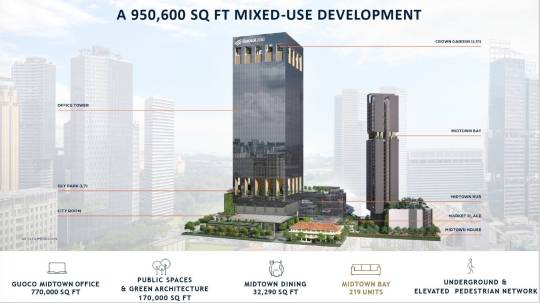
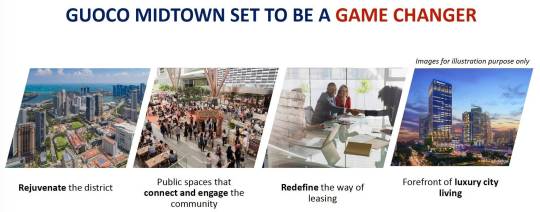


Location Map

Midtown Bay is situated along Beach Road in district 7 of Singapore. It is close to Bugis MRT Station, Nicoll Highway and East Coast Parkway. Amenities and schools in the vicinity include Bugis Junction, Bugis +, Marina Square, Farrer Park Primary School, Singapore Management University and many more.
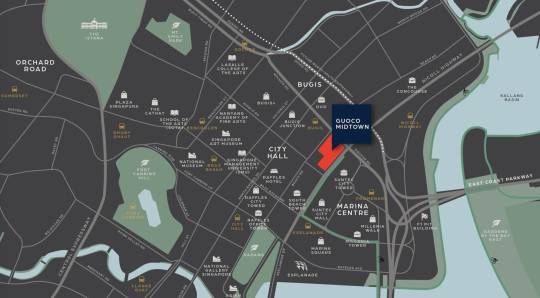


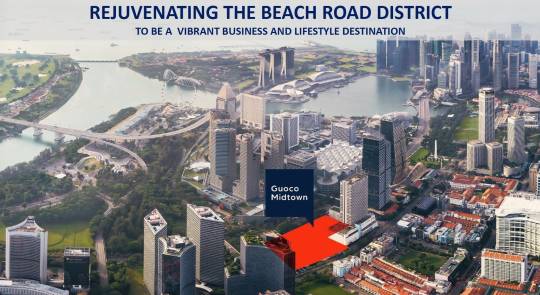

What's Nearby?
Nearest MRT
- BUGIS MRT DT14 EW12 440m
- PROMENADE MRT CC4 DT15 530m
Schools
- Stamford Primary 720m
- School Of The Arts 1.07 km
- St. Margaret's Primary 1.48 km
Shopping & Groceries
SHAW TOWERS 200m
BUGIS POINT 270m
Bugis Junction 350m
Read the full article
0 notes
Text
Vật liệu xây dựng tìm cách thoát khó
Thị trường bất động sản chững lại, thậm chí “đóng băng” ở nhiều phân khúc và khu vực trong một thời gian dài khiến hàng loạt lĩnh vực khác cũng bị ảnh hưởng, gặp nhiều khó khăn; trong đó có những ngành nghề liên quan mật thiết như vật liệu xây dựng. Đây cũng là nguyên nhân nhiều doanh nghiệp vật liệu xây dựng chìm trong thua lỗ và dự báo năm 2024 vẫn tiếp tục khó khăn.
Để tập trung tháo gỡ khó…

View On WordPress
#architect#architect of the year#architecture#architecture festival#architecture movies#architecture news#ashow#ashui#ashui asia#ashui awards#ashui pavilion#ashui vietnam corporation#ashuicom#asia architects network#bất động sản#bất động sản xanh#biến đổi khí hậu#build#building#building industry#building material#building of the year#cà phê kiến trúc#Cách#chủ đầu tư của năm#cities for people#city leaders#city vision#climate change#công trình của năm
0 notes
Text
Orane International College Canada Courses - Orane Beauty Academy – Top Academy for Makeup & Wellness Courses in Delhi
Introduction
In this article, we introduce a plan-B for those who want to learn something new.
Are you looking for a career that gives you a salary in 6-digits after your school or 12th? All parent wants that their children should get high-earning career and that’s why run to the most demanding academic career options like Doctor, Engineer, Lawyer, and Architect. However, these are not just the career options to earn in 6-digits. Look around, you will get ample options to get a high-profitable career. Do a short-term beauty course with Orane International, which is a growing chain of institutes in Asia and get ready to step towards high-earning career field. wellness courses in delhi Beauty and wellness is a growing industry and here, you can get more options than academics. According to NSDC, skilled workforce in beauty and wellness sector would grow thrice as much, from 40 lakhs in 2013 to 1.42 crores in 2022, making it the fastest growing job creator.
Let’s understand this fact by an example. In beauty and wellness industry, there are thousands of jobs but comparatively fewer applicants and academics have completely vice versa.THE
Beyond The Certificate
Masterclasses: Take your makeup skills to another level by taking exclusive workshops and makeup masterclasses conducted by renowned guest artists and industry experts. You will gain invaluable insights into specific techniques, industry trends, and career guidance.
Professional Network: When you enroll at Orane’s Beauty Academy, the respective faculty of the chosen makeup artist course at the chosen center will connect you with a thriving community of established makeup artists, opening doors to collaboration, mentorship, and exciting career opportunities.
Scope in Career as a Professional Makeup Artist
top beauty courses The courses in Cosmetology and Make-up opens up an ocean of opportunities for students. advanced makeup courses The make-up schools offer training opportunities to their students where they can learn professional skills working with real clients. It’s like an internship that helps students to shape their skills and learn the ethics and methodology of the actual beauty business industry. Established beauty brands are always in search of professional make-up artists and your degree will act as a cherry on the cake to grab such opportunities. Beauty brands pay well. Some students after completing courses start their own salon business and start their entrepreneurial journey. This gives them business exposure and a chance to shine bright on their own. Professional groomers of celebrities is also an amazing opportunity for make-up degree holders. As no one wants to get groomed by someone other than a professional nowadays.
Transform Your Passion into a Profession
At Orane International, we believe makeup is more than just a profession; it’s an art form, a powerful tool for self-expression, and a gateway to endless creative possibilities. professional makeup artist coursetop academy for makeup courses
Enrolling in a professional makeup artist course is the first step toward realizing your dream career.
Conclusion
Orane boasts a legacy of excellence since 2009 and a vast network of over 110 academies across India, Orane ensures expert training, industry connections, exposure to prestigious events, and dedicated placement services. beauty and wellness training Moreover, Orane’s curriculum emphasises technical proficiency and essential soft skills, equipping you with the tools to thrive in the competitive beauty landscape. Choose Orane and embark on a rewarding career path in the captivating world of beauty and wellness.
If You Want More Information Visit here
Contact- 8800690200
Address- A-11, Third Floor, near Metro Station
Rajouri Garden, New Delhi, 110027
Website- https://www.oranebeautyacademy.com/canada.html
#makeup courses in delhi#wellness courses in delhi#professional makeup artist coursetop academy for makeup courses#top beauty courses#beauty and wellness training
0 notes
Text
The Light Gauge Steel Framing Market size was valued at USD 41.1 Billion in 2023 and is expected to reach at USD 66.5 Billion
The light gauge steel framing market size was valued at USD 41.1 Billion in 2023 and is expected to reach a market size of USD 66.5 Billion by 2032 at a CAGR of 5.5%.
The light gauge steel framing market has experienced significant growth in recent years, driven by several key factors. Light gauge steel framing involves the use of thin sheets of steel that are formed into shapes to create structural components for buildings.
This construction method has gained popularity due to its durability, sustainability, and cost-effectiveness compared to traditional building materials like wood or concrete. In terms of market overview, the light gauge steel framing sector has witnessed a steady rise in demand, particularly in residential and commercial construction projects.
Request Sample Report: https://datahorizzonresearch.com/request-sample-pdf/light-gauge-steel-framing-market-2857

This growth can be attributed to factors such as:
· Strength and Durability: Light gauge steel framing offers high strength-to-weight ratio and durability, making it suitable for a wide range of building applications, including multi-story structures and seismic zones.
· Speed of Construction: Prefabricated light gauge steel components can be manufactured off-site and assembled quickly on-site, leading to shorter construction timelines and reduced labor costs.
· Design Flexibility: Light gauge steel framing allows for greater design flexibility, enabling architects and builders to create innovative and complex structures while maintaining structural integrity.
· Environmental Sustainability: Steel is a recyclable material, and the use of light gauge steel framing can contribute to sustainable building practices by reducing waste and minimizing environmental impact.
· Cost Efficiency: While initial material costs may be higher than some traditional building materials, the overall cost-effectiveness of light gauge steel framing becomes evident over the life cycle of the building due to lower maintenance expenses and longevity.
Top Companies are:
· Genesis Manazil Steel Framing
· Hadley Group
· Metek Plc.
· Intelligent Steel Solutions LTD
· Scottsdale Construction Systems Ltd.
· Arkitech Advanced Construction Technologies
· Tata BlueScope Steel
· SCAFCO Steel Stud Company
· The Steel Network Inc
· CEMCO
Market Segmentations:
By Type (2024–2032):
· Skeleton
· Wall bearing
· Long span
By End-use (2024–2032):
· Commercial
· Residential
· Industrial
Regional Analysis:
Asia Pacific region dominated the light gauge steel framing market share, fueled by robust construction endeavors within China, India, and Japan. Notable commercial and industrial projects, such as the Xiong’an International Trade Center in Hebei, China; the Higashi-gotanda Two-chome Third District in Tokyo, Japan; and the Infosys Pocharam Office Campus Expansion in Telangana, India, underscored the region’s dynamism. With burgeoning populations in these nations, infrastructure demands surged, serving as a catalyst for substantial growth in the construction sector.
Key highlights of the report include:
1. The report delivers thorough Market analysis, furnishing valuable insights to guide strategic decision-making.
2. The comprehensive research outlined in the study enhances the depth of your presentations and marketing strategies.
3. By offering crucial insights into key market competitors, the study empowers businesses with a strategic edge.
4. It delivers a precise assessment of evolving market dynamics, ensuring readers stay abreast of the latest industry trends.
5. With meticulous breakdowns of various market niches, the report facilitates informed decision-making processes.
0 notes
Text
The 10 Most Influential Leaders in Telecom Industry, 2024
One name that stands out here as the architect of connectivity, innovation and sustainable growth is Roque Lozano. As the Senior Vice President of Network Infrastructure MEA at Nokia, Roque’s journey spans over 25 years of expertise, transcending borders and embracing the dynamic landscapes of Europe, Asia and Latin America before finding a pivotal role in the MEA region.
#internationalbusinessmagazine#magazinesforentrepreneurs#globalbusinessmagazine#topbusinessmagazine#bestbusinessmagazineforentrepreneurs#BlogsonEntrepreneurshipandBusiness#ciolook
0 notes
Text
Navigating the Kaleidoscope: Exploring the Vibrant Spectrum of the Philippines' Media Landscape
In the heart of Southeast Asia, the Philippines unravels a mesmerizing tapestry through its dynamic and vibrant media landscape. This intricate weave of traditional and digital platforms mirrors the diverse essence of the nation, echoing its rich culture, complex history, and societal nuances.
Traditional media stands as a formidable force in the Philippines, with television, radio, and print playing pivotal roles in shaping public opinion. For decades, television has been a constant presence in Filipino households, serving not only as a source of news and entertainment but also as a cultural expression. Networks like ABS-CBN and GMA have been influential architects in shaping the nation's media narrative, producing a myriad of content ranging from gripping teleseryes to compelling news programs that captivate audiences nationwide.
Radio, with its lively morning banter and soulful tunes accompanying daily commutes, remains an intimate and accessible medium connecting people from diverse backgrounds. Despite facing challenges in the digital age, print media retains its significance, with newspapers delivering in-depth analysis and investigative reporting.
The recent surge in digital media consumption in the Philippines can be attributed to the widespread availability of the internet and the explosion of social media platforms. The younger generation, in particular, relies heavily on digital sources for news and entertainment, contributing to the diverse array of voices and perspectives available to the public through online news portals, blogs, and social media influencers.
YouTube has emerged as a focal point for content creators, turning the Philippines into a hotspot for a variety of genres, from travel vlogs showcasing the country's breathtaking landscapes to commentary channels delving into pressing social issues. This democratization of content creation empowers individuals to share their stories and opinions, fostering a more pluralistic media landscape.
While the Philippines' media landscape thrives, it faces challenges, particularly in the realm of press freedom. Concerns regarding censorship and attacks on journalists persist, highlighted by the closure of ABS-CBN, a major television network, in 2020. This event sparked debates surrounding media ownership and the imperative to safeguard the independence of media outlets.
Despite these challenges, the Philippines, with its young and tech-savvy population, stands on the brink of digital media expansion. Podcasts, for example, have gained popularity, providing a platform for in-depth discussions on various topics, contributing to the diverse content landscape.
A notable strength of the Philippines' media landscape lies in its ability to showcase the rich tapestry of Filipino culture. Teleseryes, for instance, delve into local folklore and traditions, weaving narratives that resonate with audiences on a deep cultural level. Independent films further contribute to this cultural portrayal, offering nuanced and authentic insights into Filipino life by exploring social issues and cultural nuances often overlooked in mainstream media.
In conclusion, the Philippines' media landscape is a dynamic and multifaceted tapestry reflecting the nation's history, culture, and societal complexities. From the enduring influence of traditional media to the rapidly evolving digital landscape, the diverse array of voices and perspectives contributes to the vibrant mosaic that is Philippine media. As the industry continues to navigate challenges and seize opportunities, it plays a crucial role in shaping the narrative of a nation with a story as diverse and colorful as its people. In this ever-evolving landscape, the Philippines stands as a testament to the power of media to mirror, influence, and celebrate the multifaceted identity of a nation.
0 notes